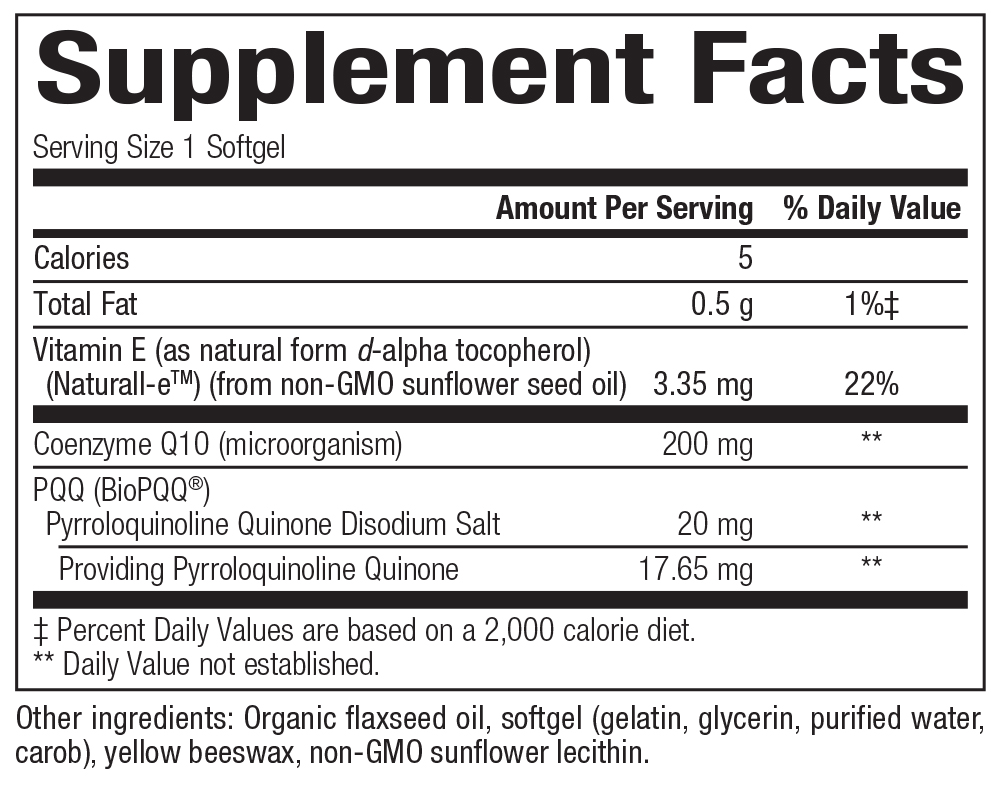
Coenzyme Q10 and Pyrroloquinoline Quinone
60 Softgels ( SKU: 9271U )
Supplement Facts:

Dosage:
1 softgel per day or as directed by a healthcare professional.
Allergens:
Contains no artificial preservatives or sweeteners; no starch, sugar, wheat, gluten, yeast, soy, corn, egg, fish, shellfish, salt, tree nuts, or GMOs.
